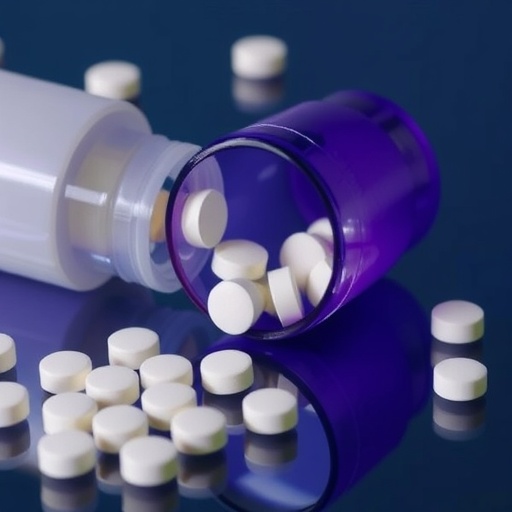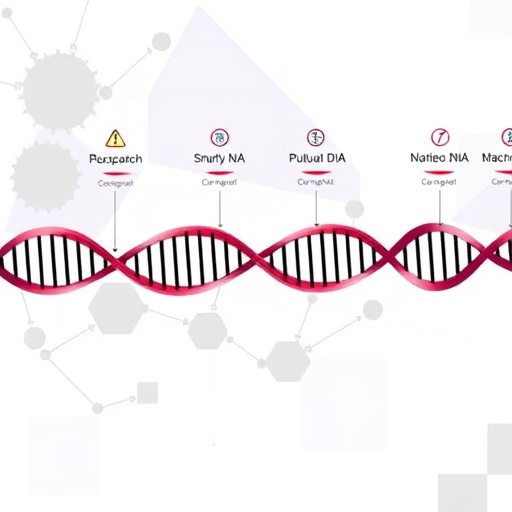In the relentless battle against substance use disorders, exercise has emerged as an unexpected but promising ally. Recent neuroscience research out of the University at Buffalo reveals a groundbreaking discovery: not all exercise regimens are equal when it comes to preventing drug addiction, particularly cocaine abuse. The pioneering study spearheaded by Dr. Panayotis Thanos and his colleagues sheds light on how high-intensity interval training (HIIT) in adolescent rats induces a profound aversion to cocaine, fundamentally altering brain pathways linked to addiction. This work not only redefines the therapeutic potential of physical activity but also suggests new frameworks for personalized medicine in addiction treatment.
Substance use disorders typically begin during adolescence, a critical developmental window where the brain is exceptionally vulnerable to the influence of addictive substances such as cocaine. Motivated by this epidemiological insight, researchers chose adolescent male rats as their experimental subjects to closely model early exposure to drugs in humans. Using controlled exercise protocols, the study meticulously compared the effects of moderate treadmill exercise against rigorous HIIT regimens. The central question was whether varying intensities of physical activity could differentially influence the animals’ subsequent cocaine-seeking behaviors.
The methodology hinged on a well-established behavioral paradigm known as the cocaine place preference test. This test conditions animals to associate distinct spatial environments with either cocaine administration or saline solution, thereby quantifying their drug-seeking preference through time spent in each chamber. Intriguingly, rats subjected to the intense bursts of HIIT preferred the saline chamber and actively avoided the cocaine-associated environment, exhibiting a clear behavioral aversion. In contrast, those undertaking moderate exercise did not display such avoidance, highlighting a pivotal dose-dependent relationship between exercise intensity and drug preference.
At the molecular level, the research delved into the neurobiological mechanisms underpinning these behavioral outcomes. Central to this inquiry was the transcription factor ΔFosB—often hailed as a molecular switch for addiction due to its role in modifying gene expression associated with drug responsiveness. The study demonstrated that HIIT robustly elevated ΔFosB levels within key components of the brain’s reward circuitry. Paradoxically, this increase was linked with heightened cocaine aversion rather than attraction, suggesting that ΔFosB’s role may be more nuanced than previously understood, potentially mediating plasticity that discourages drug-seeking behavior under certain physiological conditions.
Dr. Thanos elaborates that the findings challenge the conventional binary view of exercise as simply “good” or “bad” for addiction outcomes. Instead, they argue for a nuanced model in which exercise acts analogously to a pharmacological agent with dose-dependent effects. Just as medications require precise dosing to achieve therapeutic efficacy without adverse effects, exercise regimens must be calibrated in intensity and duration to harness their full potential as an interventional tool against substance use disorders. This paradigm shift calls for redefining exercise prescriptions in clinical and recovery settings.
Moreover, previous studies from the University at Buffalo team hinted that moderate exercise modulates metabolic activity in the brain, specifically decreasing metabolism in the somatosensory cortex while activating regions implicated in cognition and decision-making. This cognitive activation might mechanistically contribute to reduced relapse tendencies by enhancing executive functions critical to adaptive behavior. Future research spearheaded by the team aims to unveil how HIIT influences brain metabolism distinctively and whether it amplifies these cognitive benefits or acts via separate neurobiological pathways.
While this study focused exclusively on male adolescent rats due to observed gender differences in cocaine-seeking and drug sensitivity, the researchers acknowledge the significant knowledge gap regarding female subjects. Clinical literature documents that females may exhibit heightened vulnerability to certain phases of addiction and relapse, underscoring the imperative for ensuing investigations into sex-specific responses to HIIT. Incorporating female models will enrich the translational validity of findings and inform tailored interventions for both sexes.
The broader implications of this research extend into public health realms where substance use disorders remain a formidable challenge with limited effective treatments. Integrating targeted exercise protocols such as HIIT into recovery programs could potentiate abstinence maintenance and mitigate relapse risks through endogenous neurobiological mechanisms rather than pharmacological suppression alone. This approach promises a non-invasive, accessible adjunct therapy that leverages the body’s intrinsic capacity for resilience and adaptation.
A multidisciplinary team contributed to this endeavor, including experts from the University at Buffalo’s Jacobs School of Medicine and Biomedical Sciences, Washington University School of Medicine, and Western University of Health Sciences. The collaboration underscores a convergent research effort to dissect behavioral neuroscience, pharmacology, and clinical applications into addiction therapeutics. Funding from the SUNY Research Foundation facilitated the experimental rigor and comprehensive analysis presented in this study.
This landmark research propels the field of addiction biology forward by elucidating how lifestyle interventions intersect with molecular neuroplasticity. HIIT, characterized by alternating periods of intense anaerobic exercise and recovery, uniquely primes the brain’s reward systems to resist cocaine’s addictive pull. The increased expression of ΔFosB in response to such exercise may recalibrate neural networks to preferentially choose non-drug rewards, opening a new vista in the design of personalized medicine strategies against substance use disorder.
Going beyond traditional views, the findings advocate for a holistic conception of exercise, positioning it as a modifiable and potent “biological dose” capable of reshaping addiction trajectories during vulnerable adolescent periods. While translational steps from rodent models to human clinical trials remain, this research lays critical groundwork for developing evidence-based HIIT protocols to augment existing therapeutic modalities, thus offering renewed hope to millions grappling with addiction worldwide.
As the neuroscience community eagerly anticipates subsequent studies exploring female responses and the detailed metabolic effects of HIIT on the adolescent brain, the current work firmly establishes high-intensity exercise as a promising frontier in addiction intervention science. The union of rigorous experimental design, molecular insight, and pragmatic clinical implications underscores the multifaceted nature of addiction and the innovative pathways to overcoming it.
Subject of Research: Animals
Article Title: Chronic High Intensity Interval Training (HIIT) exercise in adolescent rats result in cocaine place aversion and ΔFosB induction
News Publication Date: 17-Sep-2025
Web References: https://journals.plos.org/plosone/article?id=10.1371/journal.pone.0316228
References: Thanos P., Quattin T., Hammond N., Rahman N., Zhan S. et al., PLOS One, DOI: 10.1371/journal.pone.0316228
Keywords: Neuroscience, Substance related disorders
Tags: Adolescent Lab Animals in ResearchBehavioral Paradigms in Addiction StudiesCocaine Abuse Prevention StrategiesCocaine Aversion in AdolescentsExercise and Drug AddictionExercise Regimens and Addictionhigh-intensity interval trainingImpact of Exercise on Brain PathwaysNeuroscience Research on AddictionPersonalized Medicine in Addiction TreatmentSubstance Use Disorders in AdolescenceUniversity at Buffalo Addiction Study





